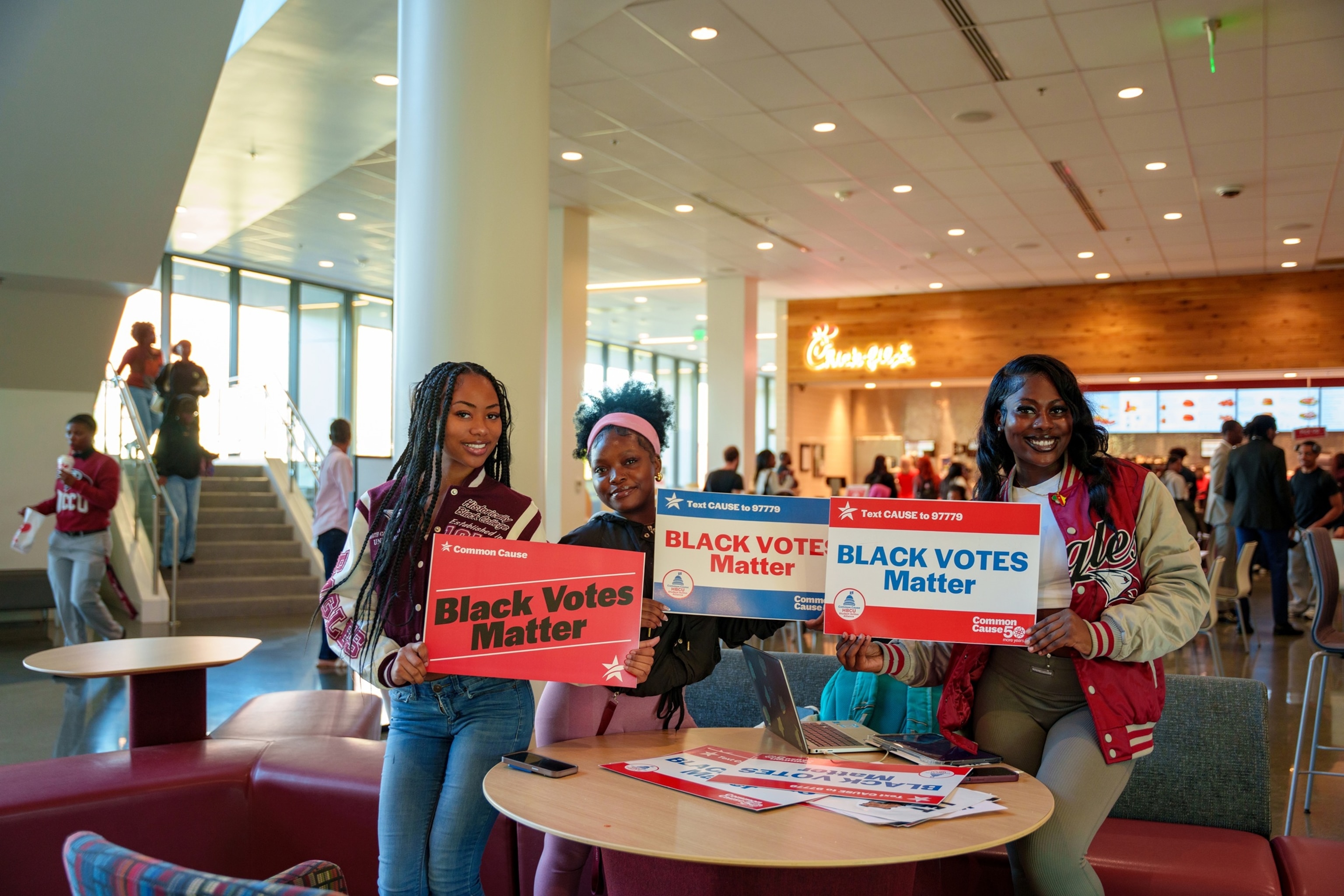
Your Voice Your Vote
ABC News
During a time of deep polarization and partisan division, the share of voters up for grabs may seem to be shrinking, but several pollsters who spoke with ABC News identified groups that could still tip 2026’s consequential midterm elections.
Hispanic voters
President Donald Trump made notable headway among Hispanic voters in 2024, particularly with promises on the economy. Now, with soaring inflation and skyrocketing prices, pollsters said the economy is the very issue that could pull these voters back.
Christine Matthews, a pollster for former Maryland Gov. Larry Hogan and former Indiana Gov. Mitch Daniels, told ABC News that young Hispanic men will be «really critical» in 2026 — a group Trump won last year by 10 points — as they represent «strong economic cost-of-living voters.»

People take part in early voting at a polling center in the Manhattan borough of New York during early voting for the upcoming mayoral election, on October 27, 2025.
Charly Triballeau/AFP via Getty Images
Trump won 48% of Latino voters in 2024 — nearly as many voters as Vice President Kamala Harris. The large Latino populations of Arizona and Nevada particularly played an outsized role in boosting Trump to victory and helping him secure these critical swing states.
Jennifer Benz, deputy director of the AP-NORC Center for Public Affairs Research, referenced immigration as another factor that might bring Hispanic voters back to the fringes. Much of their dissatisfaction stems from the immigration tactics being implemented, she said, even if voters are aligned with the president’s views at a higher level.
Black voters
While Black voters remain predominantly Democratic, their support for Trump nearly doubled in 2024. Black voters were likely influenced by the economy as well, according to Ashley Konig, director of the Eagleton Center for Public Interest Polling at Rutgers University.
Yet Trump’s economic promises appear to be falling short, with the Black unemployment rate climbing to 7.5% this year, its highest point since October 2021.

A group of students pause to pose for a photo in the Student Center before heading to the law school during NCCU’s get-out-the-vote march.
DeAndres Royal/North Carolina Central University via Getty Images
Matthews referenced a «notable [swing] among younger Black men» toward Trump in 2024 — a group that has been drifting away from the Democratic party since 2020. The way the economy shakes out over the next year is likely to influence their voting decisions, she said, similar to young Hispanic men.
Marcus James, a 43-year-old from Alabama, told ABC News that he «totally regret[s]» voting for Trump in 2016, pointing to his identity as a Black man and criticizing the administration for their treatment of minorities.
«The big question leading into 2026 is, will those same inroads that [Trump] made in ’24 carry over? Or will Democrats be able to win back their near-unanimous support among Black voters and their majority support among Hispanic voters?» Konig said.
Non-voters
Some voters could swing in the direction of not voting at all, with Lake pointing to a swath of reliably blue voters who sat out in 2024 due to disillusionment with both parties.
Popular Reads
«They’re sick of voting for the lesser two evils,» Celinda Lake, a Democratic pollster who worked on former President Joe Biden’s 2020 campaign, told ABC News. «They’re very anti-Trump. On the other hand, they want to see more of an alternative from the Democrats.»

Young people walk past a sign pointing to a vote center during the in-person early voting period in California’s Proposition 50 special election on October 27, 2025 in West Hollywood, California.
Mario Tama/Getty Images
Lovette Howard, a former Democrat who voted for Harris in 2024, told ABC News that she is undecided in 2025 because she says both parties are not «listening to what the taxpayers are saying,» citing concerns over the economy and halts to SNAP benefits, among others.
Some of these apathetic voters are even considering third-party ballots, with James telling ABC News that he voted for Independent candidates in the past two presidential races and will likely do so in 2026.
And without Trump at the top of the ticket, corralling voters to the polls is expected to present a struggle for the GOP as well. In fact, the Republican State Leadership Committee recognized itself as «the party of low-propensity voters,» launching initiatives to combat midterm drop-off.
‘Weighted vest women
After observing women in her neighborhood wearing weighted vests, Matthews conducted a national poll in which she discovered that such vests were common among educated, affluent, suburban white women with children.
Interestingly, Matthews discovered that these women were perfectly politically split.
«This is a group of voters who report in ’24 that — just by a small margin — that they had sort of been leaning towards Trump, but now they’re split on the generic ballot,» Matthews told ABC, nicknaming them «weighted vest women.»

People take part in early voting at a polling center in the Manhattan borough of New York City on October 25, 2025.
View Press/Corbis via Getty Images
Because these women are «prolific consumers» of politics and news, Matthews expects them to be a «high-turnout cohort in an off-year election.»
They are among the larger demographic of suburban white women, a constituency with blended political beliefs and physically located between urban and rural areas, she said.
Young voters
While youth turnout is traditionally low during midterms, Lake notes that they are an «increasingly higher proportion of the electorate» and therefore a «very important swing group.»
«Young people are moving back pretty dramatically toward the Democrats,» she said, before pointing out the growing gender and education gap.
Bill Galston, senior fellow of Governance Studies at the Brookings Institute, explained how youth discontent could prompt a Democratic «protest vote,» while the assassination of conservative influencer Charlie Kirk — who is credited with galvanizing young conservatives — might serve as a GOP «rallying cry for voter participation.»





